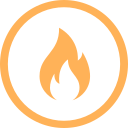Stepping Stone 6: Indigenous Concepts of Health and Wellness Part 2
by Dr. Rosalin Miles
Introduction

In Stepping Stone 5, we discussed the importance of connection to culture and traditions to develop the concepts of wholistic health and wellness, with a primary focus on the importance of physical activity for balance. Here, we will continue exploring the connections to cultural strength and traditions, in addition to ties to well-being, and self-determination.
Cultural continuity is an important aspect of establishing health and wellness within the individual, the family and the community. Cultural continuity acknowledges the ties to Indigenous history and ways of knowing, and has been recognized as an integral part of healing since the onset of colonization (Krieg, 2016).
The Bourke (2018) review highlights that the connections to Indigenous culture and traditions are the most important force for health and wellness for Indigenous communities:
“The literature largely reports that culture is significantly and positively associated with physical health, social and emotional wellbeing, and reduces risk-taking behaviours.” (Bourke et al., 2018, p. 12).
In this Stepping Stone, we will further explore cultural practices, and reflect on the intersections of culture, health and wellness. Currently, one of the predominant barriers to practicing culture and Indigenous ways of knowing in the colonial institutions is systemic racism (Roach & McMillan, 2022). To empower Indigenous community members to increase connection to cultural practices, there must also be freedom to practice self-determination. In fact, being able to freely practice self-determination through establishing individual wholistic aspirations is associated with positive health and wellness outcomes.
Wholistic Learning Objectives
Stepping Stone 6 provides learners an opportunity to reflect on diverse concepts of Indigenous health and wellness, and their ties to cultural continuity and history. Learners will also explore the importance of self-determination for improved health and wellness outcomes.
Upon completion of Stepping Stone 6, learners should be able to:
*click through all 5 slides to read each of the wholistic learning objectives*
Warm-up Activity

It can be tempting to skip your warm-up and move quickly into thinking about health and wellness promotion that is inclusive of traditional activities. Like missing your warm-up before engaging in exercise, this may result in less than ideal outcomes. Community and family concepts must be developed together with Indigenous Knowledge Keepers, some of whom are also health professionals. It is valuable to take the strengths from Traditional and Western medicine practices to create current health and wellness concepts and practices.
Content Note: The below video includes discussion of Cultural Genocide.
Watch: Canada’s First Nations: A History of “Cultural Genocide?” (2:24)
- Summarize your thoughts related to the video you just watched.
- Remember back to Stepping Stone 5 where we discussed the importance of Indigenous culture and traditional practices and their influence in all aspects of life including physical activity. What impact may this Cultural Genocide have had on Indigenous physical activity? Take some time to reflect.
Self-Determination
In Stepping Stone 6, we jump back in time through past generations to find the cultural and traditional practices and move forward to weaving them into future practices that include the Two-Eyed Seeing approach as discussed in Stepping Stones 4 and 5.
Activity 1
Read the following article.
Self-Determination and Indigenous Health: Is There a Connection?
- What is the difference between individual and community self-determination?
- How is self-determination linked to mental wellness?
Cultural Continuity
Cultural continuity is important and relevant for First Nations, Métis, and Inuit communities when considering concepts of health and wellness. While this has been known by Indigenous peoples for generations, western ways of knowing have also begun to recognize this as evidence shows that stronger ties to cultural practices within First Nation community members can lead to greater cultural continuity (Lalonde & Chandler, 1998). For example, in Inuit communities, cultural continuity is linked to health and wellness outcomes. One study found that when the ties to cultural practices (such as language and harvesting) are stronger, there is an improvement in health outcomes (Newell, 2020). In Métis communities, there are intergenerational stories of culture and identity that relate to well-being and community connections (Auger, 2021).
Cultural continuity is also valuable for healing within Indigenous communities. Building on cultural practices, Indigenous healing practices must also be incorporated when reflecting on current concepts of health and wellness and be included when developing systems of care (Corso et al, 2020).
Activity 2
Watch: Cultural Revival of Saugeen First Nations (6:24)
- What is the impact of the cultural revival for the community?
Activity 3
Read the following article.
- Reviewing the Indigenous Public Health Care Service Delivery Model, why do you think culture is placed in the middle?
The Loss and Resurgence of Culture
In the spirit of “Truth and Reconciliation”, we need to be inclusive of the healing experience for Nations and generations when exploring the TRC (2015) of Canada’s 94 Calls to Action. Specifically, when viewing the Truth component of TRC, we need to be cognizant that there are Indian Residential Survivors. However, there are many Indigenous people who did not survive colonization or the Indian Residential School systems. When reflecting back through the 156 years of colonization of Indigenous communities, we must acknowledge the resilience of the Indigenous peoples and the ability and fortitude they possess to save many of their languages with ties to Indigenous ways of Knowing for cultural health and wellness practices.
However, it must be noted that much was lost. Many communities and languages are now extinct, and some equate this terrible history to cultural genocide- a concept you were introduced to during this Stepping Stone’s Warm-Up. It is during this period of Reconciliation and the formal reclamation of health and wellness that the inclusion of diverse Indigenous cultural practices and continuity of wellness will be explored.
One challenge with implementing the TRC’s (2015) Calls to Action is that the Indian Act still exists. It is very difficult to make progress while there are still communities on-reserve, and most First Nations people do not have self-governance.
In addition to other negative social and contextual forces, the continued harmful impacts of colonization make the social determinants of health increasingly prevalent in Indigenous communities. Since the closure of Indian Residential Schools, there has been a quest for healing by Indigenous people. However, some traumas may have been too significant, and have left a lasting impact, making the ability to be at peace and hopes of a complete resurgence difficult to achieve.
Within the Western healthcare system, some Indigenous people have access to Indigenous patient Navigators or Liaisons who support community members with health literacy, family support, and advocacy with health professionals (Hiscock et al., 2022).
Exploring cultural practices should be done with the Indigenous community where you originate from. If you are not Indigenous, exploring cultural practices should still be done within the traditional territory where you live, work or play. Knowledge of cultural practices may be gained by engaging and building relationships with local Indigenous people, Elders and Knowledge Keepers.
Activity 4
Read the following article.
- What is the value of an Indigenous Patient Navigator?
Wellness Break
The true history of Indigenous cultural trauma is necessary to learn about, but it is also a tough and heavy topic to navigate.
Take a moment to have some quiet time, and put on some sounds of nature:
Allow yourself some time to absorb the information that has been presented to you in this Stepping Stone.
A Deeper Journey
We encourage you to explore these additional resources for a deeper journey related to this Stepping Stone.
*click on the headings below to reveal more resources*
Stepping Stone 6 Summary

Indigenous concepts of health and wellness are connected to individual and community self-determination. Promoting cultural continuity in all components of health and wellness services creates the opportunity for self-determination. Therefore, when reviewing the Western health care system it is valuable to determine how and where Indigenous cultural practices are included. In addition, it is important that there are Indigenous patient Navigators or Liaisons to ensure cultural safety within the health care system. Increasing access to cultural and healing practices for community members improves wholistic health and wellness. Each Indigenous community has ties to languages and ways of sharing cultural health and wellness practices.
In the next Stepping Stone, we will reflect on the importance of Indigenous Sporting Competitions and Physical Cultural Celebrations.
Cool-down Activity

Using what you learned throughout this Stepping Stone, consider the following questions.

